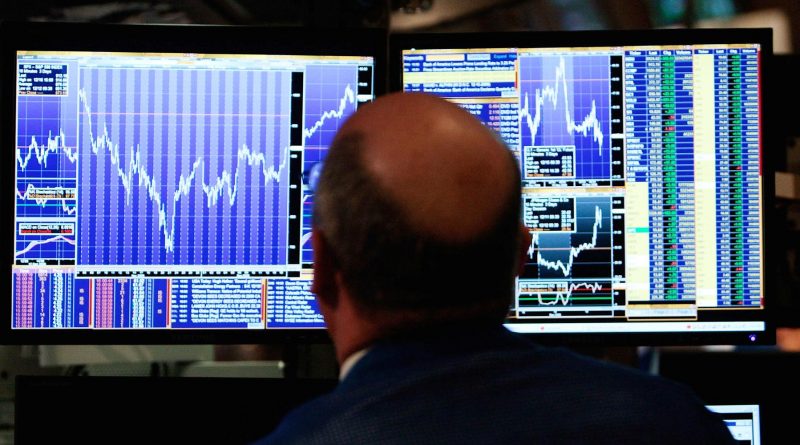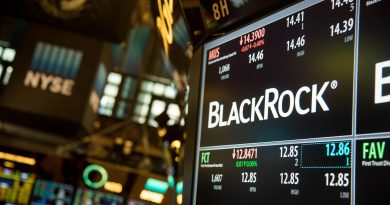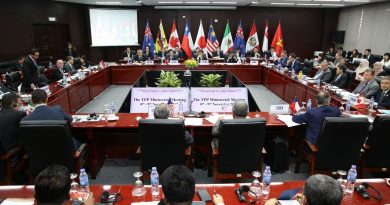(CNBC) The Fed is hopelessly behind the curve if it wants monetary nirvana
By Dr. Michael Ivanovitch
- A hugely negative federal funds rate is a dangerous luxury
- The rate has to go to 4 percent if, a big if, inflation stays at 2%
- The Fed’s monetary base, M0, is soaring at a rate of 10.6 percent
Corrected for consumer price inflation, the U.S. effective short-term interest rate, directly controlled by the Federal Reserve (Fed), closed last Friday at minus 1.04 percent.
Taking an implausible assumption that the U.S. inflation will remain stable over the next year or so at the current CPI level of 2.2 percent, the Fed would have to push up that policy rate, called the federal funds rate, by 1.04 percent just to bring its real value to zero percent.
How long would that take? Based on present guesses of three 0.25 percent interest rate increases during 2018, the Fed could get to the appropriate target range over the next twelve months – assuming, again, that inflation rate does not exceed 2.2 percent.
Would that mean “mission accomplished” for the Fed? No, not by a long shot. Zero percent real short-term interest rates would still be a policy setting for an inflation-prone monetary policy.
The next station would be the position defined as a roughly neutral monetary policy – neither tight nor loose — a kind of monetary nirvana.
Sounds like a great destination, doesn’t it? Yes, but that’s still a long way off for the Fed.
Beware too much of a good thing
Most economists estimate that the monetary neutrality is somewhere around 2 percent for the real short-term interest rate that is directly controlled by the central bank. To repeat, in the United States that interest rate is called the federal funds rate.
Let me explain what that crucially important policy instrument is.
The federal funds rate is the cost of overnight money in interbank market — the rate banks charge each other while trading their excess reserves. The Fed directly influences these bank reserves through its open market operations. When the Fed wants to withdraw liquidity from the market it sells bonds for cash. Conversely, the Fed increases the liquidity when it buys bonds and supplies cash.
The federal funds rate usually trades within a range. Last Friday, for example, it closed at 1.16 percent, a level it held since the middle of June 2017, even though its trading range was raised by the Fed this past Wednesday to 1.25-1.50 percent. The fact that the cost of overnight money traded below its new target interval means that the Fed did not move fast enough to withdraw liquidity.
Now, to answer the question of how much the Fed would have to change its current policy settings to reach a position of a neutral policy stance crucially depends on expected inflation developments.
To make things simple, let’s stay with a heroic assumption that the U.S. inflation will remain stable around its current rate of 2.2 percent. In that case, the Fed would have to drive the federal funds rate to about 4 percent – a big hike from 1.5 percent we have now.
I hope this clarifies some of the key conceptual issues of the Fed’s policy. But whether the Fed will follow these concepts is another story.
Rising inflation, however, is the only policy constraint that would force the Fed to face the music.
Accelerating price increases, crashing bond values and arbitrage along the steepening yield curve are indicators of a failing monetary policy that must be corrected by sharply rising interest rates that inevitably lead to recessions of unknown amplitude and duration.
Fed is refilling the punch bowl
The essence of the monetary policy is to avoid such a calamity by firmly anchoring inflation expectations and supporting economic activity along the path of potential (and noninflationary) growth set by the stock and quality of labor and physical capital.
But that, I fear, is not what we could be seeing in the months ahead.
America’s noninflationary growth potential, currently upgraded to an estimate of 1.8 percent, is exceeded by the actual economic growth of 2.2 percent in the first nine months of this year.
Survey evidence also shows a broad-based acceleration of economic activity in manufacturing and service sectors that is historically related with GDP growth in the range of 3.3 percent to 4.7 percent. President Donald Trump was probably referring to these correlations while he was touting his tax reform last Saturday as “one of the great Christmas gifts to middle-income people.”
Remarkably, the latest evidence on wages and consumer prices is not reflecting the increasing capacity pressures in labor and product markets. Modest gains in labor compensation are more than offset by a reviving productivity, resulting in a negative growth of unit labor costs and rising corporate profits. Similarly, the core rate of consumer price inflation has come down to 1.7 percent, after a long period of hovering around 2 percent.
Contrasting with this deceptively benign inflation picture are accelerating price pressures at producer levels. Last month, producer prices marked an annual increase of 3.1 percent, nearly triple the reading observed in November 2016.
That’s what is in the pipelines, with more of the rising price pressures coming on stream from tax cuts that could begin to boost purchasing power of households early next year.
The Fed, of course, knows all that. The question is how the nation’s monetary authorities are responding to what’s coming down the pike in the months ahead. The change of guard at the Fed should not be delaying that response, because monetary policy operates with notoriously long time-lags of at least several quarters.
Meanwhile, markets are not fooled by 0.25 percent rate hikes. They correctly don’t see that as a problem to a strengthening economy. Traders, helped by the Fed, are ignoring the regular doomsayers by holding the yield on the benchmark ten-year Treasury note roughly stable at about 2.35 percent and pushing the Dow to new heights.
Wall Street sees that the Fed is a friend that keeps expanding, rather than contracting, the money supply. At the end of last month, the Fed’s monetary base – called M0 and the right-hand side of the Fed’s balance sheet — was 10.6 percent above its level at the beginning of this year. Over that period, the Fed has added $376.1 billion of high-powered money to the U.S. economy, boosting the banking sector’s loanable funds by $266.2 billion to an astounding total of $2.2 trillion.
Investment thoughts
Do you need any further convincing that the Fed is hopelessly behind the curve traced out by an accelerating economy about to be turbo-charged by Trump’s tax cuts?
You don’t necessarily have to follow doomsayers in their perennial “head-for-the-hills” sermons.
But do think that there is something to the popular saying of “too much of a good thing.” And in the run-up to holiday excesses, there is also a useful reminder of that Austrian and Chicago School philosopher Friedrich Hayek that “inflation is like overeating and indigestion.”
Fill your Christmas tree with solid, defensive, asset values.
Source: CNBC





